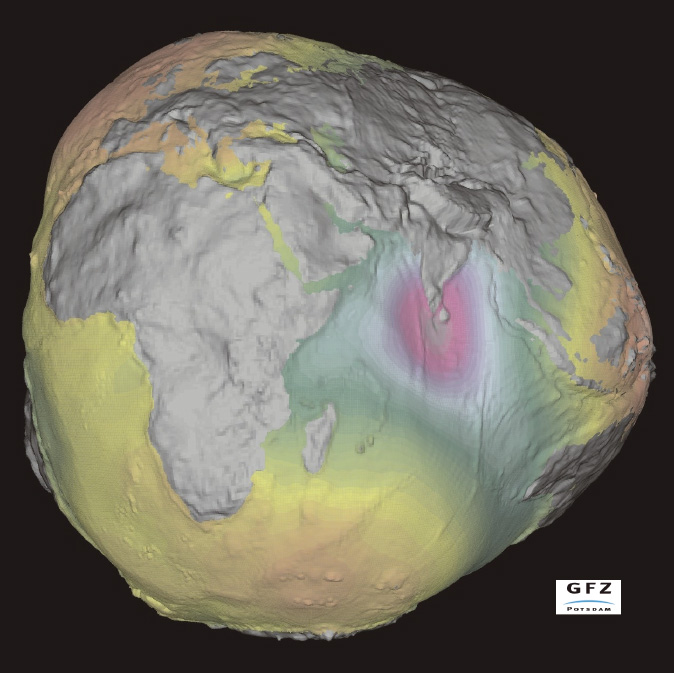Geoid
Introduction
The Geoid is a surface defined by the height of the ocean as it would be only affected by gravity. The Geoid is used to describe heights.
Explanation
We can simplify matters by imagining that the entire Earth’s surface is covered by water. If we ignore effects of tides and currents on this global ocean, the resultant water surface is affected only by gravity. This has an effect on the shape of this surface because the direction of gravity - more commonly known as the plumb line - is dependent on the distribution of mass inside the Earth. Owing to irregularities or mass anomalies in this distribution, the surface of the global ocean would be undulating. The resulting surface is called the Geoid. A plumb line through any surface point would always be perpendicular to the surface.

The Mean Sea Level
In order to establish the Geoid as a reference for heights, the ocean’s water level is registered at coastal locations over several years using tide gauges (mareographs). Averaging the registrations largely eliminates variations in sea level over time. The resultant water level represents an approximation to the Geoid and is termed mean sea level.
Local Mean Sea Level
Several definitions of local mean sea levels (also called local vertical datums) appear throughout the world. They are parallel to the Geoid but offset by up to a couple of metres to allow for local phenomena such as ocean currents, tides, coastal winds, water temperature and salinity at the location of the tide gauge. Care must be taken when using heights from another local vertical datum. This might be the case, for example, in areas along the border of adjacent nations. The local vertical datum is implemented through a levelling network, which consists of benchmarks whose height above mean sea level has been determined through geodetic levelling .
Synonyms
Equipotential surface
Learning outcomes
-
7 - Coordinate systems and map projections
Explain the relevance of reference surfaces, coordinate systems, and coordi-nate transformations in mapping (level 1 and 2).
Prior knowledge
Outgoing relations
- Geoid is a kind of Global vertical datum
- Geoid is a kind of Reference surface